Illustrations Figure 1. A young man working.
Figure 1. A young man working.
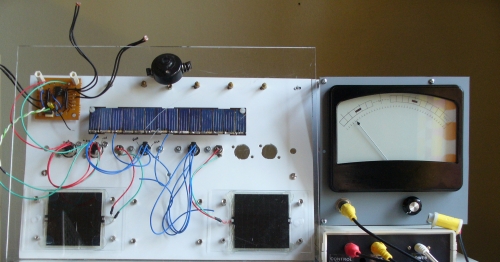 Figure 2. Environmental sensor array.
Figure 2. Environmental sensor array.
 Figure 3. Sensor pre-processor.
Figure 3. Sensor pre-processor.
 Figure 4. My
Figure 4. My version 2synthesizer. 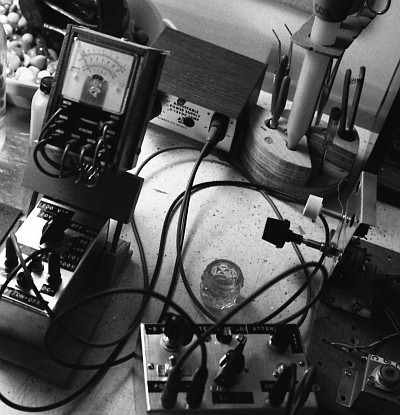 Figure 4a. Part of my 1972 work bench. This was taken at the time that I was
working on the light-sensitive tone generator mentioned in the discussion.
Figure 4a. Part of my 1972 work bench. This was taken at the time that I was
working on the light-sensitive tone generator mentioned in the discussion.
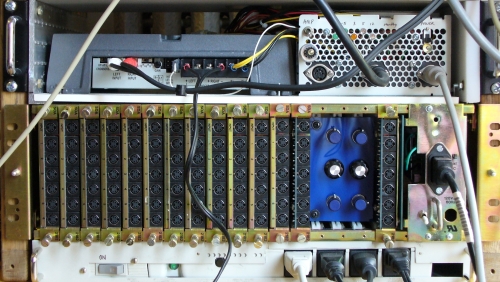 Figure 5. Control voltage and audio processing, with power strip and amplifier.
Figure 5. Control voltage and audio processing, with power strip and amplifier.
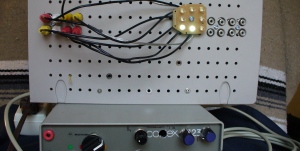 Figure 6. LED twinkler made from thrown out equipment cases.
Figure 6. LED twinkler made from thrown out equipment cases.
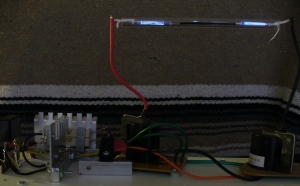 Figure 7. High voltage electrical discharge demonstration project.
Figure 7. High voltage electrical discharge demonstration project.
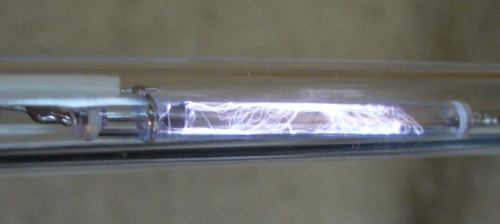 Figure 7a. Closeup of the discharge streamers.
Figure 7a. Closeup of the discharge streamers.
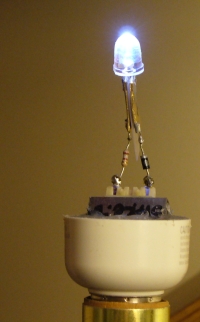 Figure 8. An LED lamp made from junk parts.
Figure 8. An LED lamp made from junk parts.
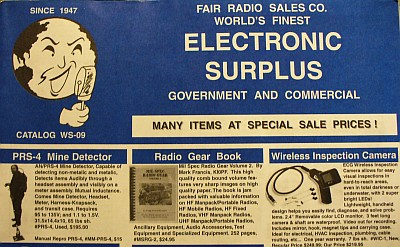 Figure 9. A recent Fair Radio catalog.
Figure 9. A recent Fair Radio catalog.
|
Life Force Designs ProjectsIntroductionThe accompanying photograph (Figure 1.) captures one of the earliest Life Force Designs projects. For better or worse, that project's product did not survive the ravages of time. Many of my projects, though they once existed in physical form, now only exist on paper as sketches, or perhaps just as memories. The products of many of my art projects have survived, often through no great effort on my part. They are the subject of a separate page. This page has been updated to concentrate on my more recent work. I think of these projects as a kind of art. This is partly because I develop them in a similar way that I used to develop art projects. Contact me if you would like me to make something for you.
Though my Electronics for Art
One of my first projects was a light-sensitive sound maker.
This basic concept continues to interest me.
The current project consists of an electronic musical instrument and
a control system that would
My sensor array currently contains mostly light sensors. They include a
variety of solar cells and some photo resistors. The solar cells generate
their own signal, while the photo resistors must be powered.
Figure 3 shows a sensor preprocesor. The purpose of this unit is to power sensors that require it and to take the signals from the sensors and amplify them for further use by other parts of the system. It is also designed to provide some level detectors that fire when a chosen sensor reaches a certain level. It can also accept logic signals from sensors that might produce them (such as motion sensors) and output short pulses of either polarity. Those pulses can then be used to trigger synth or other events.
I have tried to build a lot of music synthesizers from scratch.
It isn't easy.
This particular unit (Figure 4) does not contain the full functionality of
a classic analog synth. It's mostly a rudimentary envelope generator
running a few voltage controlled amplifiers.
I am reusing a junk video distribution rack to provide analog signal processing for my demonstration system. The first processing module I made converts voltage inputs to tones. The signal enters through a fader and is then added to a controllable offset voltage. This is because a sensor can produce a dc level in a no-signal condition. Offset allows the user to cancel out this at-rest level. A third control is for frequency range. The unit processes two separate input signals. Figure 5 also shows my stereo amplifier and power supply, and an AC power strip. These are also all made from equipment found in junk stores. The amp is designed for auto use. I like these designs because they tend to be more compact than those made for home use. All I need for it is 12 volts from an old computer power supply. That power supply also gives me power for the sensor electronics. I have used a variety of approaches to providing power to my projects. One approach is to find a case with a power supply in it and just use that. It works if the supply provides the voltages you need. The case I am using for my synth is an example of this. A more modular approach is being used for my sensor electronics. The case I am using used external power. It was an old KVM switch. I rewired its keyboard connectors (5-pin DIN, like those used for MIDI) as power connectors. The 5 pins on the connector allow +/- 5 volts and +/- 12 volts with a common ground to be supplied to any unit from a central source, such as the old computer power supply used here. I have also been known to take a power brick, break it open, and use it inside a case instead of outside. I don't like the power brick concept very much, but they are so ubiquitous that I always end up using them in some of my projects. Twinklers
I got the idea to call my LED projects LEDs are becoming more and more plentiful at junk stores. I still buy most of my bright white LEDs new. But I have found some thrown away. I see my twinklers as an extension of my musical project. That is to say, I am interested in the visual demostration of frequencies that are musically related. So far, the latest update of my twinker has one ring of LEDs that has 10 steps and another ring that has 8 steps. So they circle at a 5 to 4 ratio, which is common in music. Light Twinkler Animated GIFThis array of 9 LEDs is being driven by a signal that represents the interaction of 3 different frequencies. Here's the link: Click to go to the GIF. Right-click to download. Demonstrators
A demonstrator can be used in a classroom or similar situation to
illustrate electronic principles and phenomena to a group.
An ideal demonstrator would be completely enclosed and not expose
the users to any hazards that might commonly be associated
with electronic equipment. The
Figure 7 shows a high voltage discharge demonstrator.
It's not much to look at, but a user can get a real close look
at high voltage discharges without any risk of getting hurt.
The clear cover (not pictured because it was too reflective)
was found at a junk store.
The high voltage transformers are from old Other ProjectsEwaste
This project explores the use of junk power supplies to run low-voltage
lighting systems.
Its purpose is to create designs that are safe and easy to make.
Figure 8 shows an early prototype.
Paranormal ProjectInspired by my work at the Seattle Museum of Mysteries (now known as the Northwest Museum of Legend and Lore), I have made some preliminary designs for a system intended to interact with disembodied spirits. This is still in the theory stage, but overlaps with my electronic art project. ResourcesElectronic JunkGoodwill and RePCThese are two great sources of technology junk in my area.
The Goodwill Outlet and RePC are on the same block just south of downtown.
If you can find what you want at Goodwill, it will be cheaper than at RePC.
But the people at Goodwill have told me (Feb 2011) that they are
phasing out the sale of electronic junk at this outlet store.
Still, interesting items occasionally slip through.
Surplus and OverstockThe first surplus store I shopped at was on Main Street in downtown Ann Arbor. That was the early 1970's. A store called Electronics Etc. in Berkeley was my major supplier for the years when I lived there. And in the L.A. area there is All Electronics, one of the biggest suppliers of truly surplus parts on the internet. These days real surplus electronics stores are rare, as most of the manufacturing has moved overseas. However, some do still exist on the internet. They sell a mixture of cheap gear, kits, and new and/or surplus parts. They cater mostly to hobbyists and students now. Fair Radio SalesFair Radio in Lima, Ohio, deserves special mention. Fair Radio supplied me with some of the most interesting electronic items that I have seen during my years as a hobbyist and technician. They specialize in Navy surplus radio gear. The items I purchased from them included meter movements, equipment racks, real Navy rack mount gear, and an old tube oscilloscope that still worked. |